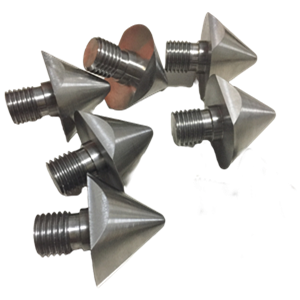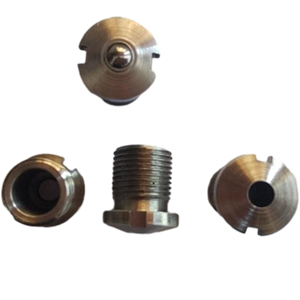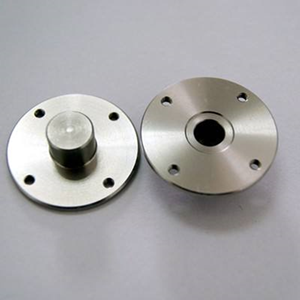Generally speaking, alloy steel containing more than 12% Cr or 8% nickel is called stainless steel. This kind of steel has a certain corrosion resistance in the atmosphere or in corrosive media, and has high strength at higher temperatures (>450 ℃). Chromium content of up to 16% to 18% of the steel is called acid-resistant steel or acid-resistant stainless steel, customarily referred to as stainless steel.
Due to the above-mentioned characteristics of stainless steel, it is more and more widely used in aviation, aerospace, chemical, petroleum, construction and food and other industrial sectors,as well as in daily life.
Difficult characteristics of stainless steel in CNC cutting process:
1. Severe work hardening
Stainless steel plasticity, plastic deformation when the character of the distortion, the strengthening factor is very large; and austenite is not stable enough, under the action of cutting stress, part of the austenite will be transformed into martensite; coupled with the compound impurities in the cutting heat, easy to decompose under the action of the diffuse distribution, so that the hardening layer is generated during the cutting process. Cutting force: stainless steel in the cutting process of plastic deformation, resulting in an increase in cutting force.
2. High Cutting force
Stainless steel in the cutting process of plastic deformation, resulting in an increase in cutting force. Stainless steel processing hardening is serious, high thermal strength, further increasing the cutting resistance, chip curling breakage is also more difficult.
3. High cutting temperature
Cutting plastic deformation and friction with the tool are very large, resulting in a lot of cutting heat; a lot of cutting heat are concentrated in the cutting zone and knife - chip contact interface, poor heat dissipation conditions.
4. Chips are not easy to break, easy bonding
Stainless steel plasticity, toughness are very large, CNC machining chip continuous, not only affecting the smooth operation, chips will also be crowded injury has been processed surface. At high temperatures and high pressures, stainless steel and other metal affinity, easy to produce adhesion phenomenon, and the formation of chip tumors, not only exacerbate tool wear, but also tear phenomenon and deterioration of the processed surface.
5. Easy to wear tools
Cutting stainless steel in the process of affinity, so that the knife - chip bonding, diffusion, so that the tool to produce bonding wear, diffusion wear, resulting in the front face of the tool to produce crescent pits, the cutting edge will also form a small spalling and gap; coupled with stainless steel in the carbide (such as TiC) particles of hardness is very high, cutting directly in contact with the tool, friction, abrasion of the tool, there are also Work hardening phenomenon, will make the tool wear increased.
6. Large coefficient of linear expansion
The coefficient of linear expansion of stainless steel is about 1.5 times that of carbon steel, under the action of cutting temperature, the workpiece is prone to thermal deformation, and the dimensional accuracy is more difficult to control.
Although stainless steel cutting has the characteristics of high thermal intensity, large plastic deformation, severe work hardening, high cutting heat, and difficulty in heat dissipation, the processing quality of stainless steel can be guaranteed by selecting appropriate tools, cutting fluids, cutting dosage, and processing methods.
The solutions to stainless steel processing difficulties are as follows:
1. Use cutting tools with high thermal conductivity.
2. Sharp cutting edge line: the chip groove inserts are wider, which can reduce the cutting pressure, so the resistance can be controlled.
3. Appropriate cutting conditions: inappropriate processing conditions will reduce tool life.
4. Selection of appropriate cutting tools: stainless steel tools should have excellent toughness, cutting edge strength and the clamping strength of the coating film is also relatively high.





 8619169854258
8619169854258 Lisalin1029
Lisalin1029 +86-769-89308850
+86-769-89308850


